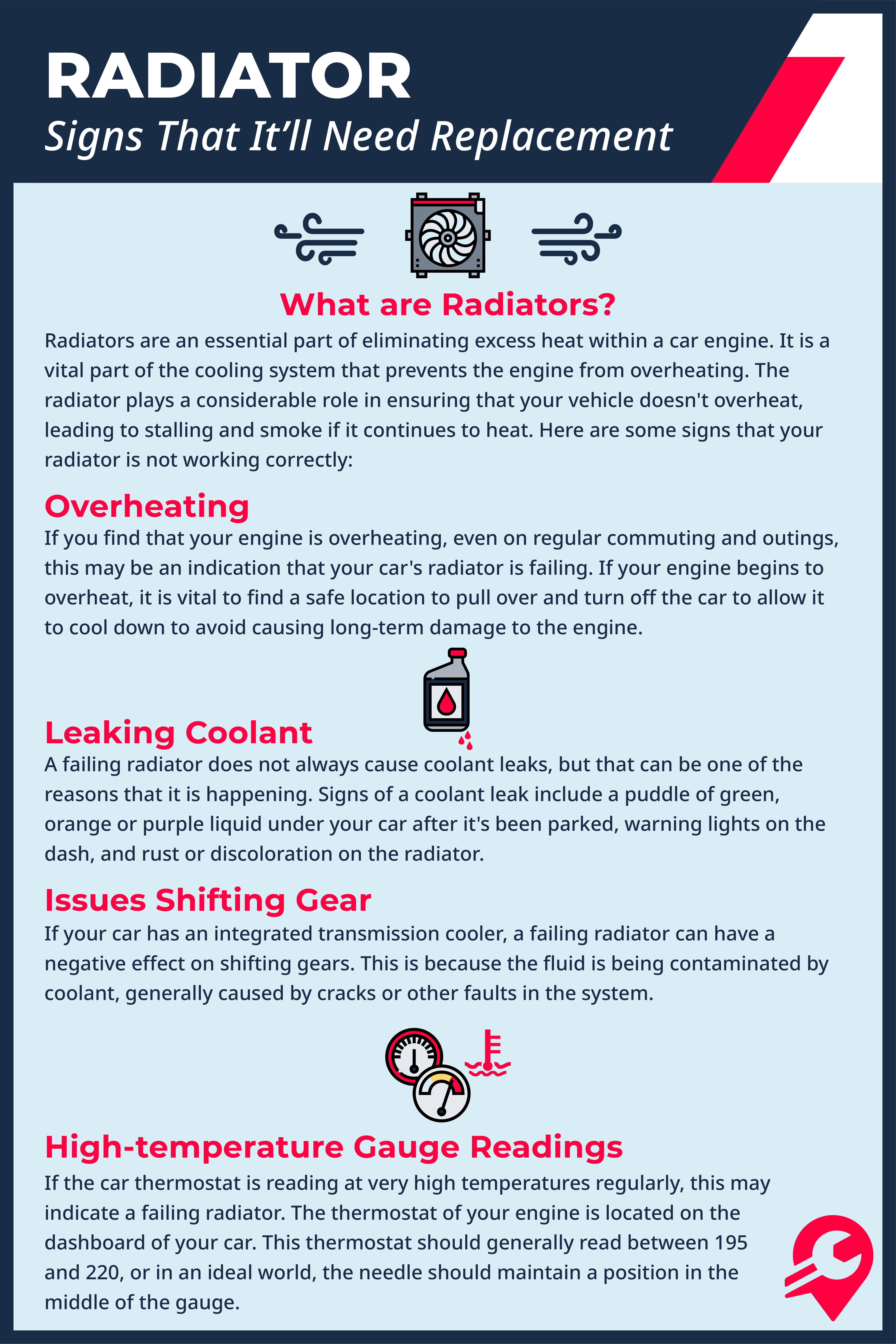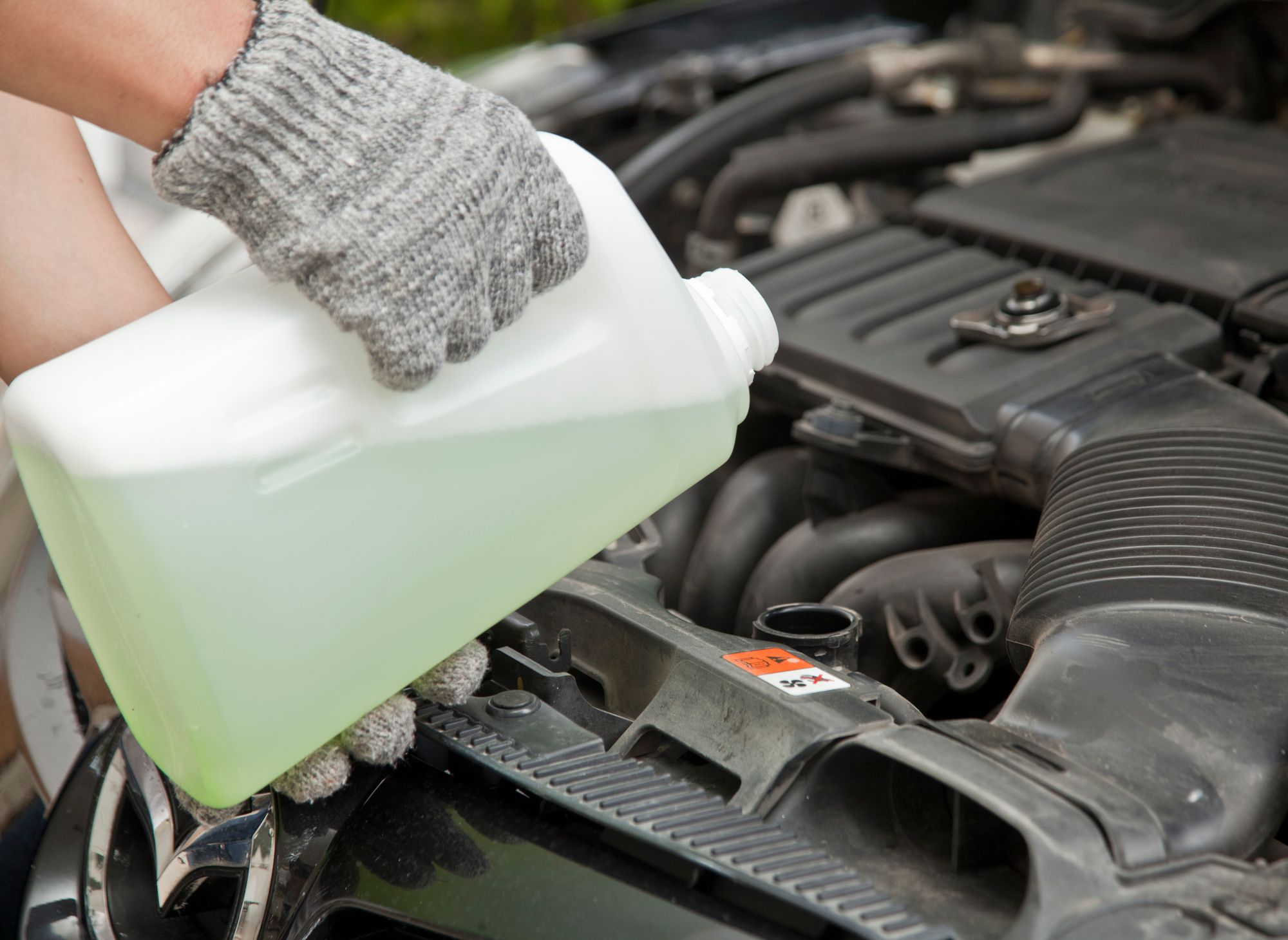If you drive a newer car, your car is less likely to overheat, especially with the proper maintenance. However, suppose you find that your car is regularly overheating at any age. Then, it is essential to get the vehicle serviced if there is a problem with the coolant system or the radiator.
Get a free quoteWhat exactly does the radiator in your car do?
Radiators are an essential part of eliminating excess heat within a car engine. It is a vital part of the cooling system that prevents the engine from overheating. The engine pumps coolant through the engine, taking the heat from the engine into the coolant, which travels to the radiator. The radiator then blows air across the coolant to cool down the liquid, dispersing the heat from the engine to the outside air of the car. The radiator plays a considerable role in ensuring that your vehicle doesn't overheat, leading to stalling and smoke if it continues to heat.

Some signs that your radiator is not working correctly:
Overheating
If you find that your engine is overheating, even on regular commuting and outings, this may be an indication that your car's radiator is failing. This is an obvious sign as it will often cause your vehicle to shut off, and your vehicle may not start. This is because the cylinder head expands, and the cylinder compression escapes beyond the cylinder head gasket. If you continue to drive your car without turning it off, it can cause severe damage to your vehicle's engine. If your engine begins to overheat, it is vital to find a safe location to pull over and turn off the car to allow it to cool down to avoid causing long-term damage to the engine.
Your Car is Leaking Coolant
If your car is leaking coolant, this can be an obvious sign that the radiator is failing. If you find that your vehicle has a coolant leak, it is best to avoid driving it until you have remedied the problem. If you do find yourself in a situation where a coolant leak is present in your car, it is best to avoid driving the vehicle until the leak has been fixed. Wrench offers a cooling system leak inspection to help you diagnose a leak and its severity.
Build up or Contamination of Coolant
If the coolant in your radiator appears discolored, it is important to get service for your car. Also, the coolant can look rusty or oil colored; both indicate a contaminant build-up in your radiator. If this problem is present within your vehicle, it can have a significant impact on the radiator's performance. There are a couple of reasons this could be happening, one of which is a failing radiator, so it is crucial to have the issue diagnosed. Wrench offers diagnostic services that will help discover and remedy the problem.
Low Coolant levels
This is not always a sign that there is a problem, but it can sometimes be an indicator of a leak. For example, if you find that your vehicle's coolant levels are dropping quickly, this is generally because of a leak. If the coolant level light on your car's dash lights up, checking the coolant level and refilling it is the first step you should take. Coolant generally needs to be added to a vehicle every thirty thousand miles. If you find that the light again shows up on the dash, it is time to get your car serviced to diagnose a leak causing the low coolant level.

Issues Shifting Gear
If your car has an integrated transmission cooler, a failing radiator can have a negative effect on shifting gears. This is because the fluid is being contaminated by coolant, generally caused by cracks or other faults in the system.
High-temperature Gauge Readings
If the car thermostat is reading at very high temperatures regularly, this may indicate a failing radiator. The thermostat of your engine is located on the dashboard of your car. This thermostat should generally read between 195 and 220, or in an ideal world, the needle should maintain a position in the middle of the gauge. If your car is continuously reading over this amount, you are at risk for your car overheating.
Exterior Radiator Fins Blocked
Radiator fins can clog up from dirt, leaves, and other grime accumulated throughout driving. With a blockage on the radiator fins, the coolant cannot cool as much as it needs to. Thus, if your radiator is clogged or blocked, it can cause your car to overheat.
Passenger Heater Malfunctioning
Cabin heat relies on hot coolant passing through the heater core to create hot air to blow through the cabin fan. If your vehicle's radiator is failing, not enough hot coolant will make it to the heater core, which results in poor heating within the cabin. This can be caused by a bad thermostat or a failing radiator, so it is crucial to diagnose and fix the problem to avoid other inconveniences.
All of these things can be symptoms of indicators of a bad radiator. A failing radiator poses a significant threat to the health and longevity of your car. If any of these things plague your vehicle, it is essential to get diagnostic services done. Diagnostic services are one of the most popular services Wrench offers. Our ASE-certified auto technicians can often diagnose and fix the problem within one visit. If our mobile technicians have a time restraint or find that they need to order a part for your service, booking a follow-up appointment has never been simpler. Get started today with your car maintenance or repairs using Wrench with the button located at the top and bottom of this page!
Get a free quote

